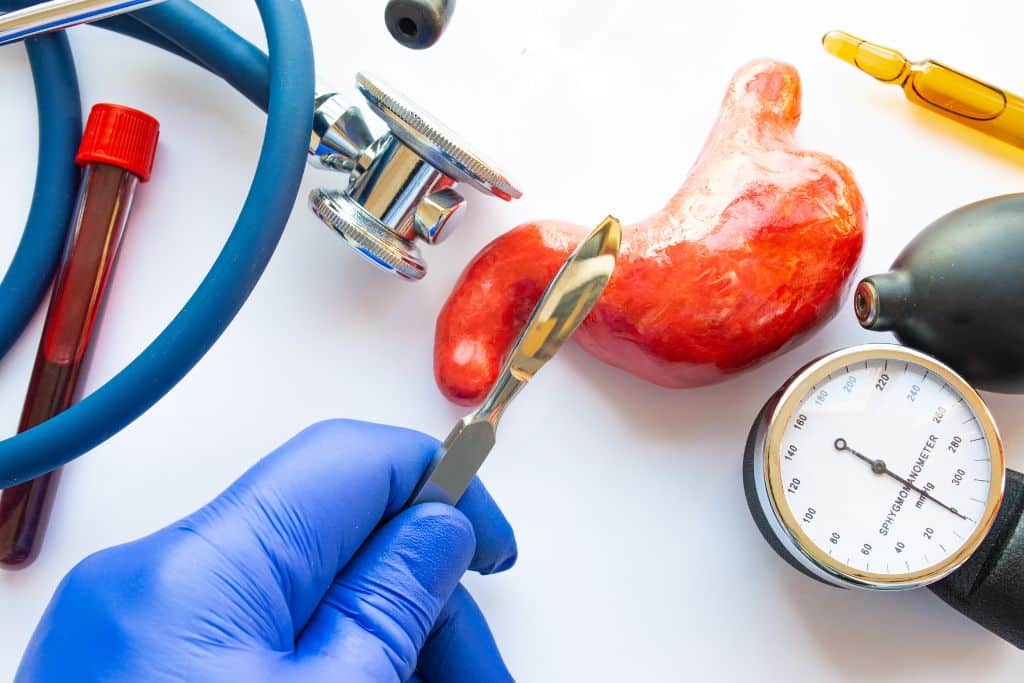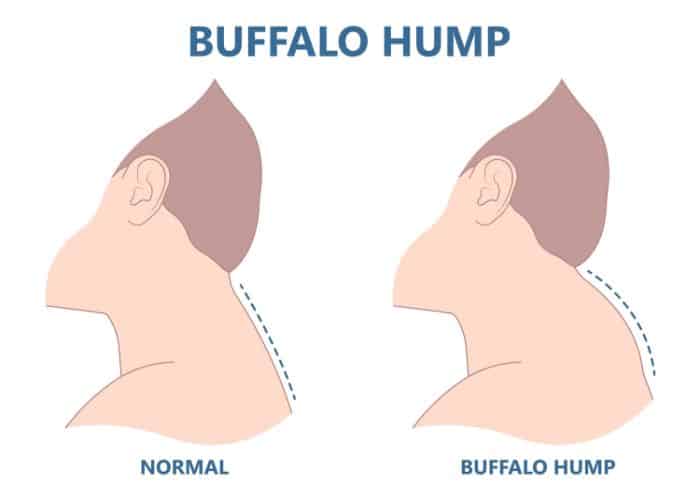When you want to lose weight or have a leaner, fit physique, you'll need to take your measurements every so often, accompanied by weighing in on the scale.
But most of us have a shady relationship with the scale. Off and on, you'll notice a massive change in your measurements, although the scale hasn't moved a bit! The reason is that as you exercise and get in shape, you build muscle – and muscle will occupy less space in your body than fat adapts. You'll be amazed to witness the inches decreasing. Your clothes will fit loosely, and it's a joy to see your sizes progress with your overall improvement.
Body positivity and weight loss coincide. Positivity exists in the way you establish your purpose and goals to be the most fulfilled you. The main thing is that you focus on your results, not only on the scale's digit but track how your efforts make you feel and look.
One way to embark on holistic health is to track the progress of your weight loss routine by taking body measurements. But just how frequently should you take your measurements?
Contents
How To Take Body Measurements?
When gaining muscle mass or losing weight, knowing the proper way to take body measurements is essential. Almost all of us spring on the bathroom scale to check if there's a slight change. Sad to relate, it will commonly lie to you regarding your progress. And your weight and BMI don't often reveal the inside story because when you lose fat and bulk up, you might even weigh more than ever.
And getting your measurements is a more fruitful way to track progress as it helps you find out how much fat you've dropped up against muscle. And above all, you gain an insight into how to enhance your body composition.
There are a handful of ways to land on the best measurements. Take note of these tips:
-
Be sure to use a tape measure that is flexible and inelastic. A soft fabric measuring tape or a tape meant clearly for taking body measurements is a fine choice.
-
Preferably, you must wear thin and somewhat fitted clothing or just underwear. Never wear clothes of different thicknesses whenever you measure, or else it can distort the measurements.
-
Stand straight and tall with proper posture. Don't slouch and flex. Relax, and you'll get a more precise measurement at all times.
-
Place the measuring tape securely across the body, but don't shift in the back, and indent the skin. And make sure the tape is straight and in line with the corresponding body part.
-
For precision, take your measures two times and get the average. Write down the results. Look at the numbers objectively as time progresses.
Although more people prefer to take measurements in the early hours, the real goal is to measure at the same time of day, under the same conditions.
What Body Parts Should I Measure?

There are five main measurement sites, and with some practice, it’s pretty easy to measure them yourself. Measuring in inches is a much better method to define wellness level and decrease in body fat, together with muscle built up.
Chest
In measuring the chest, keep your torso straight. Place the tape measure around your bust at its widest point. This will be across the nipples for women, and for men, this will be at the armpits.
Waist
With your arms at your sides, keep the tape across the belly button or the narrowest part of your torso. Make sure it's straight across and is resting against your bare stomach. Exhale and then measure the tape.
The waist can be the least credible site because of bloating. Your waist circumference will change nearly an inch throughout the day. Usually, women's measurements will be way-off during their monthly period.
Hips
It is also known as the 'bum,' which is the body's fullest part. Place feet together. Wrap the tape at the widest point around your buttocks (usually just above the crotch line). Ensure that the measuring tape is parallel on both hips.
Thigh
Measure midway between the hip bone and the back of the knee or around the largest part of your thigh. Because the legs can be a little different in size, whenever you take measures make that it's the same leg.
Arms
Stand fully upright with arms hanging naturally at the sides. Measure at the widest part of your upper arm, or at the bicep. Remember, which arm you use and how many inches you positioned the tape from the elbow for accuracy.
Other body parts to measure:
-
Abs: Stand up straight, feet together and torso straight. Don't suck in your stomach. Measure the broadest part of your abdominal area, across your belly button.
-
Calves: Measure around your calf's widest part, usually halfway between the knee and the ankle. Note if you measured the right or left calf.
Record each measurement and keep them in a good place where you can remember them. Now, fall in with your exercise routine and healthy diet plan.
Monitoring Your Weight Loss Journey
If you wake up every first thing in the morning and immediately measure yourself to check if you've shed a bit of an inch, you will bewilder yourself.
You can't achieve your weight-loss goals overnight, according to a certified personal trainer, Rodrigo Garduño. When you're trying to lose weight, gain muscle mass, or attain both, it's a brilliant idea to take measures every 2 to 4 weeks to evaluate how your efforts transform your physical structure. For those preserving their physique and body weight, monthly measurements help keep them under control.
Spot reduction, or a targeted exercise meant to burn fat in specific body parts, commonly doesn't work for most parts of the body. Measuring several body areas is a practical approach as this provides you with a general picture of how your body changes.
Assessing your body measurements for weight loss will persuade you that fat is being destroyed, despite not losing fat where you need it.
What Are The Benefits of Taking The Measurement Of Your Body?
Measuring yourself on a regular basis enables you to track the progress of your body's development and see the results in figures that are discernable, easy to follow, and the most reliable evidence that you're slimming down. Based on some peer-reviewed studies, following your improvement keeps you encouraged once the results begin to come into view.
It also helps in backtracking your steps if you relapse for some time and stop working out or regress to poor eating patterns. Thus, taking measurements regularly helps to assign liability to yourself.
Besides, it could even have a beneficial subconscious effect. When you begin being conscious of your body, you'll probably start instinctively modifying your behaviours and making sounder decisions in all areas of your life.
Taking your measurements might help you focus on your body goals once the thrill of exercise has lost intensity and become a habit.
Normal Body Measurements
Measuring yourself on a regular basis enables you to track the progress of your body's development and see the results in figures that are discernable, easy to follow, and the most reliable evidence that you're slimming down. Based on some peer-reviewed studies, following your improvement keeps you encouraged once the results begin to come into view.
It also helps in backtracking your steps if you relapse for some time and stop working out or regress to poor eating patterns. Thus, taking measurements regularly helps to assign liability to yourself.
Besides, it could even have a beneficial subconscious effect. When you begin being conscious of your body, you'll probably start instinctively modifying your behaviours and making sounder decisions in all areas of your life.
Taking your measurements might help you focus on your body goals once the thrill of exercise has lost intensity and become a habit.

How Body Measurements Change Over Time
People desire to shed fat in some areas while maintaining the rest when they kick off their weight loss routine. Regrettably, we can't pick where the fat breaks off. Your body composition is distinct to you and will vary gradually depending on your exercises, lifestyle, and aging system.
Your body burns fat everywhere, though it takes more time in parts with more fat. You can't direct where the fat breaks off, but you can explore your bodily features and that of your parents and have a good idea of where you must store fat.
We're all imprisoned by our genes to a certain degree, but that doesn't suggest you can't make modifications to your body. To achieve this, be sure you have a balanced fitness plan that combines a low diet that lets you burn more calories than you consume, cardiovascular exercise three to seven times per week, and strength training for all muscles twice a week.
Adhere to your approach and let your body adjust. As effects can take weeks or even months to materialize, prioritize other objectives, such as getting stronger and feeling better.
Other Ways To Check Your Progress
You may also reap success checking other methods other than weighing in on the scale and taking measures of your body, including:
-
evaluating your bone structure and height
-
figuring out your body fat percentage
-
sizing how clothing feels and your energy levels
Final Thoughts
Waiting patiently for several weeks will offer you a more accurate picture of your development as you dodge the typical seesaw weight changes that occur to us on a daily basis. Therefore, set aside the scale and adopt a more reliable and promising way of tracking your journey to your body goals.






